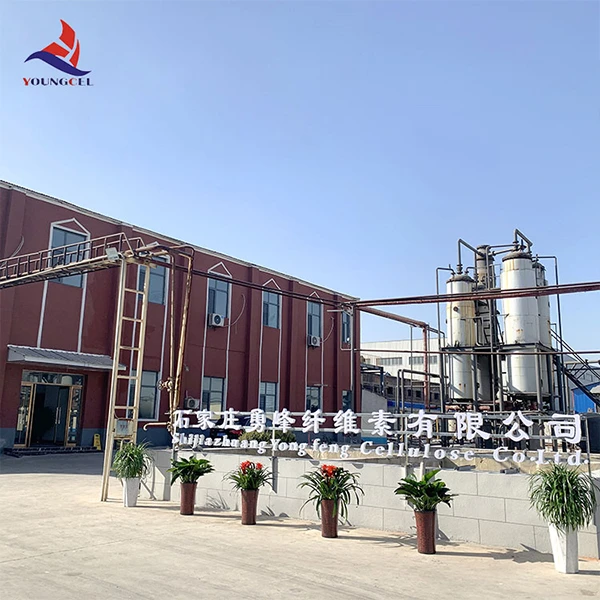Understanding Cellulose Ether Prices Trends and Factors Influencing the Market
Cellulose ethers are a critical group of chemical compounds derived from cellulose, a natural polymer found in the cell walls of plants. These compounds are widely used in various industries, including pharmaceuticals, food, cosmetics, and construction, primarily due to their thickening, binding, and stabilizing properties. As the demand for cellulose ethers continues to grow, understanding the factors that influence their prices becomes essential for manufacturers, suppliers, and consumers alike.
Current Trends in Cellulose Ether Prices
In recent years, cellulose ether prices have exhibited significant fluctuations driven by a multitude of factors. According to market analysts, the prices have generally trended upwards, attributed to both increased demand and varying production costs. For instance, the rising need for environmentally friendly and biodegradable substances has propelled cellulose ethers into the spotlight, as they are derived from renewable resources and are generally considered safer alternatives to synthetic polymers.
Moreover, the global market for cellulose ethers is expected to witness robust growth. The construction and building sectors, heavily reliant on cellulose ethers as thickening agents in cement and mortar, have seen an uptick in demand due to a surge in infrastructure projects worldwide. Similarly, the rising consumer awareness regarding health and safety has encouraged the use of cellulose ethers in food products, further bolstering demand.
Factors Influencing Cellulose Ether Prices
1. Raw Material Costs The primary raw material for cellulose ethers is cellulose, which is typically sourced from wood pulp or cotton. Variations in the availability of these raw materials due to environmental factors or changes in agricultural practices can significantly impact production costs. For example, fluctuations in cotton prices or disruptions in wood supply can result in increased costs for manufacturers, which are often passed on to consumers through higher prices of cellulose ethers.
2. Production Capacity and Technology The efficiency and capacity of production facilities play a crucial role in determining the overall pricing of cellulose ethers. Advances in technology can enhance production efficiency, thereby reducing costs. However, if demand outstrips supply, prices are likely to rise. Conversely, if manufacturers overestimate market demand and expand capacity accordingly, they may face excess inventory, which could lead to price reductions.
cellulose ether price

3. Regulatory Environment The regulatory landscape can significantly influence cellulose ether prices. Stricter environmental regulations regarding the production and use of chemicals can result in increased compliance costs for manufacturers. Additionally, shifts in policies concerning the import and export of raw materials can create volatility in pricing. Producers must navigate these regulations carefully to mitigate their impact on overall costs.
4. Market Competition The level of competition within the cellulose ether market can also affect pricing strategies. Increased competition generally leads to more competitive pricing, as companies strive to capture greater market share. However, if the market becomes dominated by a few key players, they may have the leverage to maintain higher prices.
5. Economic Conditions Broader economic trends play a vital role in influencing cellulose ether prices. Economic downturns can reduce demand across sectors, leading to price declines. Conversely, during economic growth periods, increased construction and manufacturing activities can heighten demand, driving prices upward.
Looking Ahead The Future of Cellulose Ether Pricing
As the world continues to shift towards sustainability and eco-friendly materials, the future of cellulose ether pricing looks promising. The increasing recognition of the benefits of cellulose ethers in various applications suggests sustained demand. However, industry stakeholders must remain vigilant regarding fluctuations in raw material prices, regulatory changes, and market dynamics.
Moreover, ongoing research and development in optimizing production processes and enhancing the performance characteristics of cellulose ethers may also influence future pricing trends. Innovations that lead to more cost-effective and sustainable production methods could ultimately provide more stability in pricing.
In conclusion, the cellulose ether market is poised for growth, but its pricing is subject to a complex interplay of factors. Staying informed about market trends, production technologies, and economic conditions will be essential for anyone involved in the cellulose ether supply chain. Understanding these dynamics will not only aid in strategic planning but also ensure a competitive edge in the evolving marketplace.
-
The Application and Significance of Construction RdpNewsMay.19,2025
-
Industrial Grade HpmcNewsMay.19,2025
-
Building Coating Adhesive Building Coating Adhesive HpmcNewsMay.19,2025
-
Application Of Hpmc For Detergent For Detergent In DetergentsNewsMay.19,2025
-
Application Of Hpmc Cellulose In Cement-Based MaterialsNewsMay.19,2025
-
Application Of High Quality Hpmc For Construction In The Field Of ConstructionNewsMay.19,2025




